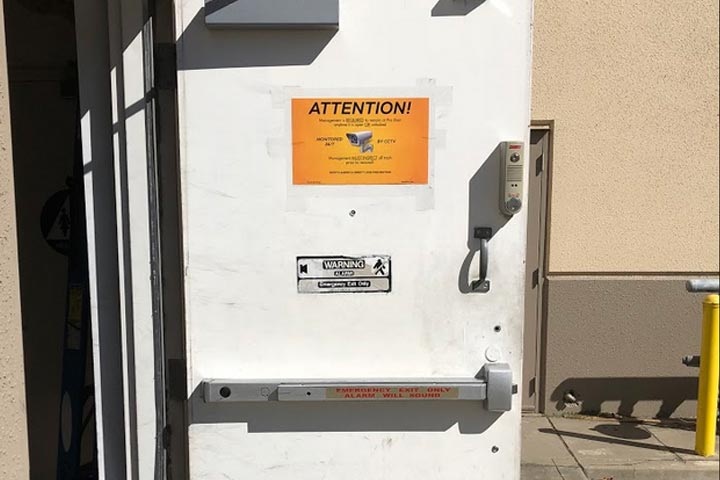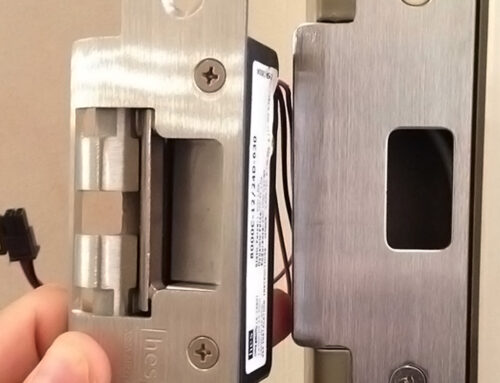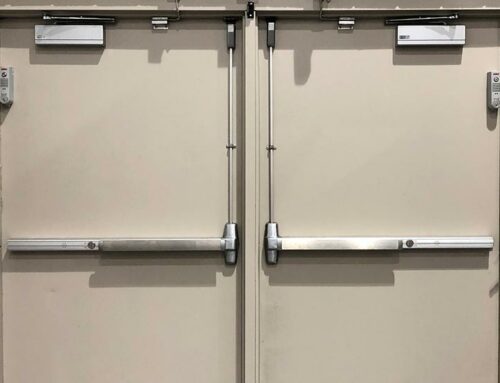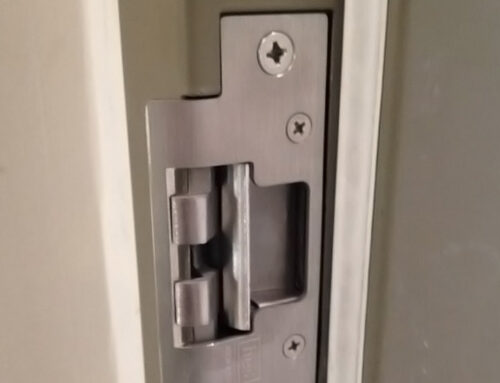Fire-rated doors save lives. That is, if they are working, which is why maintaining your fire-rated doors is so important. Fire doors that close automatically in the events of a fire can seal sections of your building off from those in flame. This protection buys people time to act and can help limit damage to your property.
However, people may rarely use the fire doors on your property, and their self-closing functions are tested even less often. Many property owners only discovered that their fire doors didn’t close after a fire and therefore allowed the fire to spread unchecked. Not only can this cause loss of life and property damage, but it can also cause you problems with your insurance company and potentially the government if you are required to have operational fire doors in your policy or by law.
Having a professional maintain your fire-rated doors is the only way to ensure that they are working properly and will offer protection in the event of a fire. Here’s what you need to know about maintaining fire doors, including an inspection checklist your door professional should follow.
What is a Fire-Rated Door?
Fire-rated doors are typically steel interior or exterior doors. They have special weatherstripping and high strength so that they can seal off smoke and resist flame for long periods of time. Their goal is not necessarily to stop fires but to prevent or slow the spread of fire, including flame and smoke, in buildings. They reduce the harm to people, give people more time to evacuate and give the fire department more time to respond.
Properly functioning fire doors can save lives. They can also limit the damage to your property in the event of a fire and reduce your liability. Your insurance company may require fire doors or add fire doors to your existing building to lower your premiums. Building codes may require your door to withstand fire for a certain period of time, from thirty minutes to three hours.
Not everyone can inspect, modify, and certify fire doors. The team at CLAD has Raceway Installer’s certification from Intertek, which allows us to work on fire doors and recertify them in the field. That means you don’t need a new door or for us to uninstall your current door to get recertification, in many cases.
There are many different closure options for fire-rated doors, such as vertical sliding and rolling steel. There are also different access points that may require their own fire-rated door solution that looks substantially different from a typical interior door. This may include doors for service counters, chutes, and hoistway doors for elevators and dumbwaiters.
Why Maintain Fire-Rated Doors
Failure to close due to lack of maintenance is the most common fire door failure. Other factors such as physical damage, broken tracks or guides, and items blocking the door are other possible causes of a fire door that fails to close. When the door doesn’t close, smoke and flame just walk right through.Thankfully, simple door maintenance can ensure that your door is working properly and will provide the protection that it is rated to provide.
Further, maintenance on fire-rated doors is more important than some other door maintained. Many fire doors are not used routinely, and their ability to self-close is almost never tested. While your staff, tenants, guests, and others will bring issues with doors that they use to their attention, no one will notice issues with fire doors. That means that inspection and maintenance is your only opportunity to fix any issues with the door.
Inspection Procedure for Fire-Rated Doors
The National Fire Protection Association lists minimum standards for fire-door inspections. This includes a bare minimum of 11 inspection items. The inspector must ensure that:
- There are no missing or broken parts on the door
- There are no whole or breaks in the door surface or frame (or they could allow smoke through)
- The self-closure device is working
- The latching hardware works and secures the door when it closes
- Additional hardware does not interfere with the door’s ability to close and seal
- All glazing, glazing beads and vision light frames are intact
- The active lead of the coordinators was installed before the inactive leaf (so the door closely fully)
- The door frame, hardware, hinges and threshold are aligned (or they could allow for smoke)
- Gaskets and edge seals are present and in working condition
- Door modifications do not void the label (or the fire-rating could be reduced)
- The label is permanently affixed to the door
These are just the basics. There are many more steps that may be involved in inspecting and maintaining your fire door, depending on its type and the hardware that you have installed on it.
Also, getting this inspection just once isn’t enough. You should have your fire-rated doors inspected on an annual basis. It’s a great idea to schedule the inspection for the same day that you test your smoke alarms and do other things for fire prevention and detection. That way, you will be more likely to remember to maintain your fire doors when you are thinking about fire prevention every year.
Each year, when the maintenance is complete, your door professional should give you documentation or help you fill out your own documentation that lists the door number, location, type and fire rating. It should note what state the technician found the door in, how they altered it, and if it is certified moving forward.
How to Prevent Damage and Blockage
You can also help keep your fire-rated doors in working order by preventing people from damaging or blocking them. Some people get frustrated by fire doors, especially if they routinely walk through them. So, they may prop open the door or damage the self-closing hardware so that the door doesn’t close. To prevent this, educate staff, tenants, and others on why it is important not to block the door. Once they know how the door protects them and how much extra time it buys them in the event of a fire, they will be much less likely to create issues you need to fix with maintenance.







